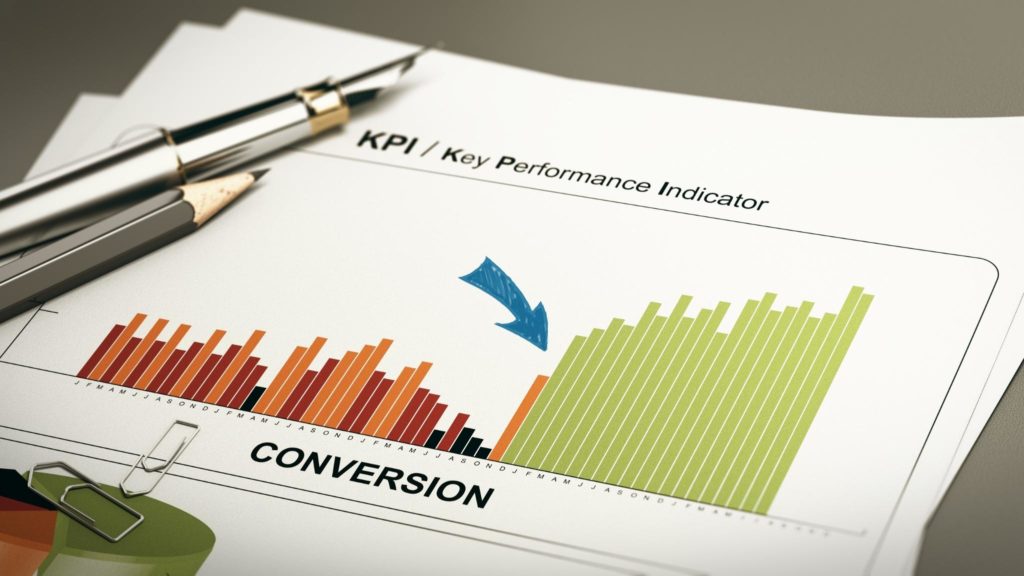It’s not enough to create a website – you need to make sure that it fulfills the tasks you set. And one of the essential metrics that measure website performance is conversion. This article will tell you what a conversion is, how to calculate it, what conversion rates can be considered successful, and how to optimize your site so that more visitors make purchases and click on links.
What is conversion?
Contents
Conversion is how a site visitor takes the action you want. Depending on the site’s purpose, this can be buying a product, registering for an event, downloading an application, subscribing to a course, or any other action that turns a visitor into a potential customer.
How to calculate conversion
Before calculating the conversion, decide on the user’s action on the site. As we wrote above, such an action can be purchasing a product or service, registering, or even subscribing to your newsletter.
Here is the conversion formula used to calculate:
[ number of visitors who took the desired action ] / [ total number of visitors ] = conversion rateIn simpler terms, you need to divide the number of visitors who took action by the number of all site visitors.
Here are some examples of how to calculate conversion rates:
Example 1: Tickets for a concert
Imagine that you are a concert promoter and decide to create a website that sells tickets for a show online. In this case, the conversion is the number of people who visited the site and purchased tickets. To calculate the conversion, you need to study the site statistics. For example, in March, 1,176 people came to the site, 56 of them bought tickets to the concert. Based on the formula above, you carry out the following calculation.
56 / 1,176 = 0.048, or 4.8%
This means that the conversion rate in March was 4.8%.
Example 2: Fitness site
In this example, you are a fitness trainer looking to expand your client base. To do this, you have created a website where you offer a free weekly workout checklist. All visitors need to do to receive an index is leave their email address. This will give visitors free workout information and new recipients for future marketing emails. In this case, the conversion is the users who left their mail. You can see that 635 visitors came to the site in July, of which 21 people sent an email.
The same conversion formula is used here:
21 / 635 = 0.033, or 3.3%
In this case, the conversion rate in July was 3.3%.
What is a reasonable conversion rate?
What is a good conversion in marketing? How do you know if a website is performing well or if you urgently need to optimize it for better results? There is no universal answer to this question. A satisfactory conversion rate depends on the industry, business goals, audience behavior, and location. However, the approximate figures are as follows: for areas like hi-tech, finance, healthcare, and so on, a range of 2 to 5% is considered a reasonable conversion rate. For eCommerce, the metrics are lower – from 1.84 to 3.71%. Conversion rate is a way to measure website performance and motivate yourself to new successes. Therefore, choose ambitious yet achievable numbers when setting your target conversion rate.
Also, keep in mind that conversion rates are only relevant for sites with good traffic. For example, if your site is visited by four people a month, and one of them takes the desired action, the conversion rate will be an unimaginable 25% – but such statistics are utterly useless for measuring site performance. First, focus on attracting many new visitors, and only then start calculating the conversion.
Where to see site statistics
Google Analytics. You can set conversion goals and track their progress in real-time on this service. Google Analytics has a lot of valuable metrics, including the number of visitors to your site.
Built-in analytics tool. For example, Cloud Retouch analytics is available to all platform users. With its help, you can track user behavior: for example, compare the actions of new and regular visitors. Plus, you’ll receive personalized recommendations for improving conversions and other metrics.
How to increase conversion
- Create a landing page. The advantage of a selling landing page is that nothing distracts the client from purchasing a product – unlike a multi-page site with a considerable amount of information. Be sure to write down the product’s benefits and add a call to action button.
- Improve UX. Clear and legible text, intuitive navigation, and the ability to buy in a couple of clicks make the user experience more comfortable and, therefore, increase the likelihood of conversion.
- Add a solid call to action. Make sure your site has a button with a relevant CTA. For example: Buy Now, Register for a Course, or Subscribe. Make it as easy as possible for the client to take this or that action.
- Optimize your mobile version. More than 50% of user traffic comes from smartphones and tablets, which means your mobile version should work perfectly for a good conversion. Reduce the number of elements and make the buttons more prominent and visible.
- Chat with users via live chat. By adding a live chat feature to the site, you can quickly answer any questions – which means increasing loyalty and, as a result, getting more potential customers.
- Add reviews. Positive testimonials from your previous customers will help build more trusting relationships with your visitors and nudge them towards a purchase or other action you want.
